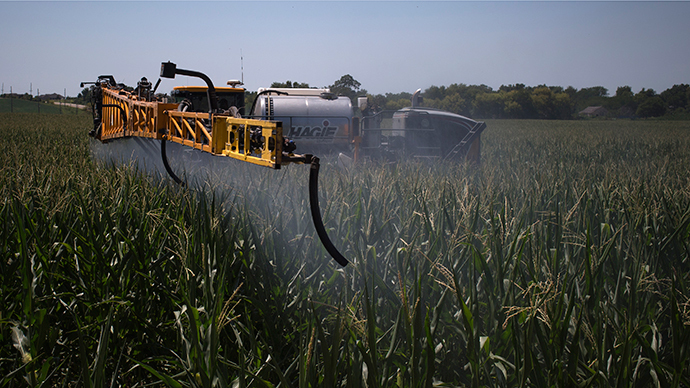EPA does not have to address call to mandate labeling of hazardous pesticide ingredients - judge

The US Environmental Protection Agency does not need to face claims that it should require the labeling of potentially hazardous inert ingredients in pesticides, a federal judge has ruled. The agency dodged dissenting pro-health groups for eight years.
The agency was petitioned in 2006 to consider mandatory disclosure of hundreds of hazardous and non-hazardous ingredients. The EPA already requires pesticide manufacturers to list active ingredients on a product’s label, but inert ingredients can be withheld.
The Center for Environmental Health and Californians for Pesticide Reform petitioned the EPA to devise a plan to require labeling 374 inert chemicals on pesticide products that "have been determined to be hazardous under other environmental laws and regulated as such by the EPA," according to the 2006 complaint.
The EPA did not respond to the petition until the groups sued in June 2009 for unreasonable delay, claiming the agency was in violation of the Administrative Procedures Act.
In September 2009, the EPA offered an advance notice, Courthouse News reported, of proposed action to address inert ingredients but ultimately said that it was "not committing, and indeed legally cannot commit, to any particular outcome for rulemaking," according to the new court ruling.
With this notice, the EPA moved to dismiss the suit in February 2010 on grounds that it had responded to the petitions and the issue was now moot. The groups then filed a voluntary dismissal in March 2010, ending the case.
Yet the EPA then took no further action for four years. The groups again filed suit claiming unreasonable delay in the face of their petitions. Two months later, the EPA stated it was not going to pursue rules mandating the disclosure of inert ingredients, but said it would explore other approaches to the issue. The agency again called the issue moot, moving for dismissal.
Claiming unreasonable delay again, the groups said in turn that the case was still current since the EPA did not fully respond to and deny their petition.
US District Judge William H. Orrick ruled with the EPA on Friday, dismissing the case. He wrote that the EPA did not commit to anything beyond issuing the advanced notice of proposed rulemaking, thereby concluding action on the plaintiffs’ petitions.
"That the EPA has indicated that it is considering (but not committing to) action which arguably parallels part of what the plaintiffs requested in their original petition does not mean that the EPA has retroactively granted the portion of the plaintiffs' petition that the EPA denied in 2009," Orrick wrote in the six-page decision.
"Plaintiffs are understandably frustrated that they may be no closer to fulfilling their goal eight years after petitioning the EPA to require that pesticide product labels list hazardous inert ingredients. But the EPA has unambiguously 'concluded' the 'matters' presented to it in plaintiffs' petitions, as required under the Administrative Procedures Act … and I can offer the plaintiffs no relief. This matter is moot, a deficiency which cannot be cured by amendment."
Carolyn Cox, of the Center for Environmental Health, said the groups are disappointed by the decision.
"The agency had really been looking at good changes for progress on the issue and has now just backed off," she told Courthouse News.
Cox said the petitioning groups "have not had time to strategize about the next best approach.” But, she said, they "definitely have some next steps," including the possibility of another petition.
"Because pesticides are something we are all exposed to every day, there are a lot of compelling reasons to know the ingredients," she said.
Cox added that pesticide disclosure is a vital health issue, and that doctors cannot treat someone poisoned by a pesticide if the ingredients are unknown.
"This has been an important, controversial issue for decades, and we will keep working with [the EPA] until we can make some progress on it," Cox said. "We are definitely not going away."
An EPA spokesperson told Courthouse News that the agency "is considering reviewing the inert ingredients in the petition currently listed for use in pesticides to determine which ones are still used in pesticides, revising the list of inert ingredients approved for use in pesticide products in light of that analysis, establishing criteria for prioritization, and selecting top candidate inert ingredients for further analysis and potential action to address those risks."
Meanwhile, the EPA decided last week to deregulate agribusiness giant Dow Chemical’s Enlist corn and soybeans. The genetically-modified organisms are designed to withstand repeated spraying of the herbicide 2,4-D, a component of the toxic defoliant “Agent Orange,” which is linked to cancers of the immune system, Parkinson’s disease, endocrine disruption, and reproductive-health ailments. According to the Center for Food Safety, the EPA has yet to approve the actual herbicide, a mix of 2,4-D and glyphosate.













